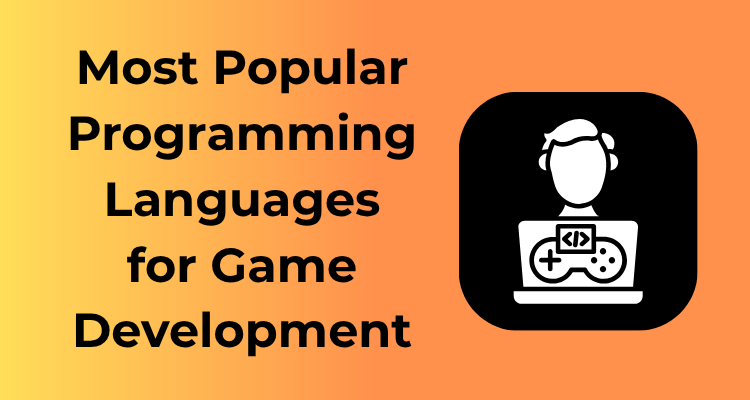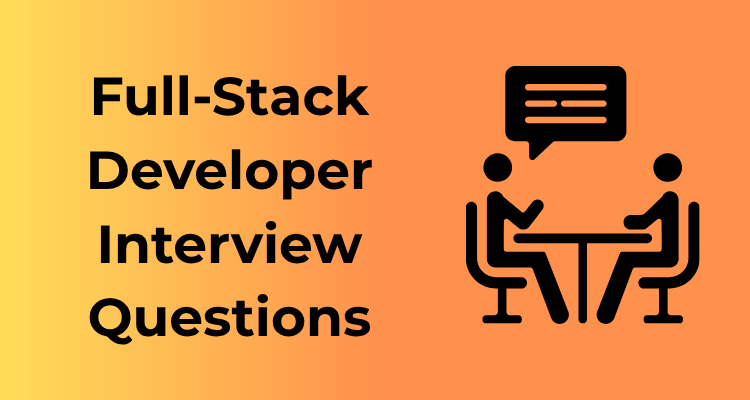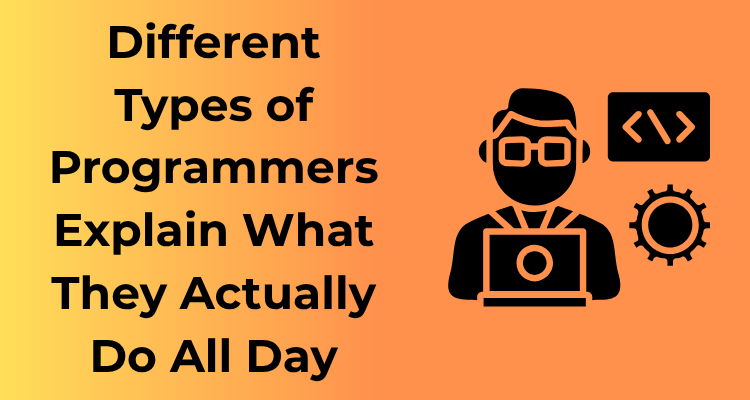Hey there, future programming superstar! Diving into coding can feel like staring at an endless mountain, but trust me, it doesn’t have to be overwhelming. The key? Start small. Let’s talk about breaking programs into bite-sized pieces and why this is one of the most important steps in your journey to becoming an exceptional programmer.
Why Starting Small Is So Powerful
Think of a program like a giant jigsaw puzzle. If you try to solve the whole thing at once, it’s hard to know where to begin, right? But if you separate the pieces into edges, corners, and sections, everything starts to come together. Programming is exactly the same. By breaking down a program into smaller, manageable chunks, you make each step less intimidating and more achievable!
Practical Tips to Start Small
Here’s how you can master the art of starting small:
- Understand the problem first: Before you do anything, spend time understanding what the program is supposed to do. Create a roadmap in your mind or on paper.
- Break the task into sub-tasks: Let’s say you’re writing a simple calculator. Instead of tackling the whole thing, focus on building the feature to add two numbers first. Then move to subtraction, multiplication, and so on.
- Write pseudocode: Pseudocode is like a rough draft for your program. Use simple English (or your native language) to outline your steps before you even touch code. This ensures clarity.
- Build and test incrementally: Once a small piece of your program is working, test it! This way, if something doesn’t work, you can quickly narrow down the issue without having to sift through hundreds of lines of code.
The “Lego” Approach: Build Piece by Piece
Another way to think about starting small is like building with Legos. Each piece might not look impressive on its own, but when you connect enough of them, you create something amazing! Whether it’s a function, a loop, or just printing your first “Hello, World!”—master each piece before moving to the next. Assemble it step by step, and soon, you’ll have a program that works like magic!
Celebrate the Little Wins

When you’re starting small, every little success is worth celebrating. Successfully printed text to the console? High-five yourself! Looped through an array without breaking everything? Amazing! Celebrating these small wins will boost your confidence and keep you motivated.
What You’ll Gain by Starting Small
Taking this approach isn’t just about making programming less daunting; it’s about building excellent habits:
- You’ll become better at troubleshooting since you’ll know exactly where things went wrong.
- You’ll create cleaner, modular code—a skill every great programmer should have!
- It sets a foundation for tackling larger, more complex projects later on.
Mastering One Language Before Moving On
If you’re curious about becoming a strong programmer, here’s some game-changing advice: take your time to master one programming language before jumping to another. It’s tempting to pick up multiple languages quickly, but focusing on one until you’re absolutely confident is like laying a strong foundation for a house—it will make everything else easier in the long run.
Why Stick to One Language?
Every programming language has its quirks, syntax, and unique ecosystem. Learning one thoroughly helps you develop key problem-solving skills without drowning in complexity. For instance, if you pick Python as your first language (a fantastic choice for beginners!), you can focus on solving logical problems and writing clean, readable code without getting distracted by overly complicated syntax.
Think of it as learning one musical instrument first. Once you nail the piano, transitioning to the guitar may feel more natural because you already understand music theory and rhythm. Similarly, when you master a programming language, the concepts you build will act as stepping stones to learning other languages faster in the future.
How Do You Fully Master a Language?
- Learn the Basics Thoroughly: Start by understanding syntax, loops, conditionals, functions, and data structures like arrays, lists, or dictionaries in your chosen language.
- Build Personal Projects: To cement your understanding, build real-world projects like a to-do list app, a simple calculator, or even a weather tracker. The process of creating something solidifies your learning.
- Understand Libraries and Frameworks: Languages like Python or JavaScript come with amazing libraries or frameworks. Learn to use tools like NumPy or Flask. They extend what your programming can do and expose you to how developers really work.
- Know the Common Mistakes: With time, you’ll notice where beginners often stumble. Maybe it’s off-by-one errors with loops or misunderstanding null values. Spotting these means you’re leveling up!
The goal here isn’t to become a language perfectionist (nobody knows everything), but to become so confident that when someone mentions inheritance in Object-Oriented Programming, you don’t break into a cold sweat. This depth will make your transition to the next language far smoother.
When Is It Time to Move On?
- When You’re Comfortable Building Projects: Once you can independently build functional applications, it’s a good sign you’ve got the hang of things.
- When You Can Debug Effectively: If you can read error messages and debug efficiently in your chosen language, you’re ready for the next challenge.
- When You Understand Programming Fundamentals: Concepts like variables, loops, functions, debugging, and error handling should feel natural to you.
But What About All Those Other Fancy Languages?
Ah, yes. You’ve probably heard that JavaScript is king of the web, or that Java dominates enterprise applications. And then there’s always someone hyping up Rust, Go, or Swift. Here’s the secret: every programming language shares foundational ideas. Once you master one language, you’re not starting over when you pick up another; instead, you’re building on everything you’ve already learned.
Learning Through Real-World Projects
So, you’ve been tinkering with concepts, variables, loops, and maybe even functions. Awesome start! But let me tell you a little secret: reading about code or watching tutorials can only take you so far. If you really want to grow as a programmer and feel that “aha!” moment, you need to get your hands dirty. And the best way to do that? Real-world projects.
Why Real-World Projects Matter
Programming isn’t just about writing lines of code; it’s about solving problems. Real-world projects teach you to interpret a problem, break it down into smaller parts, and figure out how to solve each piece—just like a puzzle. The process is messy, yes, but it closely mirrors what you’d do in a professional setting.
With each project, you start connecting the dots. Suddenly, those abstract concepts you learned come alive! Plus, having tangible results—a website, a mobile app, or a cool script—feels incredibly rewarding, doesn’t it? Let’s face it, nothing beats that “Look what I built!” moment.
Where to Start?
You don’t need to reinvent the wheel. Start small and work on problems that interest you. Here are a few ideas to dip your toes in:
- Build a personal website: This is a great starter project, and tools like HTML, CSS, and JavaScript make it beginner-friendly. Create a portfolio or even a blog to share your learning journey.
- Automate a task: Got something repetitive you do every day, like organizing files? Try creating a Python script to automate it.
- Mini-games: Develop a simple game like Tic Tac Toe or a number guessing game. They’re fun and help with logical thinking and user interaction.
- Weather app: Use open weather APIs to build an app that fetches and displays weather information. You’ll get hands-on experience with APIs and asynchronous programming.
The point is: find something YOU are curious about. If it’s not interesting to you, trust me, you’ll lose steam fast.
Learning by Failing
Don’t expect your projects to go perfectly. They won’t. And that’s where the magic happens. The moment you start debugging issues, understanding why that one pesky function doesn’t behave as expected, or figuring out better solutions—THAT’S the real learning. Failing is not the opposite of success here; it’s part of the process.
Need some encouragement? Experienced developers fail too—yes, even that senior programmer who seems to solve everything within minutes.
Building a Portfolio
Once you’ve completed a few projects, it’s a fantastic idea to showcase them. Platforms like GitHub can be your best friend here. A polished portfolio of real-world projects doesn’t just help you learn; it also showcases your skills to future employers or collaborators.
Pro tip: Try to include detailed README files for your projects. Explain what they do, how they work, and what challenges you overcame. This demonstrates not only your technical ability but also your communication skills.
The Role of Collaboration
Working on solo projects is great for building fundamentals, but don’t underestimate the power of collaboration. Contributing to open-source projects or joining a team project helps you learn how to code with others—an essential skill if you’re aiming for a programming career.
Reading and Understanding Others’ Code
If you want to level up as a programmer, mastering the ability to read and understand others’ code is like earning a secret weapon. Think about it: programming isn’t just about writing code; it’s about problem-solving, strategic thinking, and collaboration. By delving into existing code, you can gain insights into how others approach problems, and even pick up some tricks you wouldn’t have thought of otherwise.
Why Read Other People’s Code?
First things first, let’s talk about why reading code written by others is such a valuable practice:
- Learn Best Practices: Not all code is created equal, but well-written code teaches you efficient techniques and patterns.
- Get Comfortable with Diversity: Everyone has a unique coding style. Understanding various approaches helps you adapt quickly, especially when you join teams with established systems.
- Fix Bugs Faster: Debugging someone else’s code is challenging, but it teaches you how to analyze logic and navigate unfamiliar territory.
- Prepare for Collaboration: Programming is rarely a solo effort. Reading code written by others equips you for working with colleagues or contributing to open-source projects.
How to Start Reading Others’ Code Like a Pro

Okay, so you get why it’s important. But how do you start? Here are some steps to make the most of this habit:
- Pick Something Medium-Sized: Don’t go for an entire operating system or the world’s most complex software just yet. Choose projects that align with your skill level but are large enough to introduce new concepts.
- Read Code Repositories: Platforms like GitHub and GitLab are goldmines. Search for projects written in the language you’re learning, whether it’s Python, JavaScript, or C++.
- Start With Documentation: Many projects come with README files or contributor guides. These can give you the context needed to navigate the codebase effectively.
- Follow the Flow: Focus on understanding the architecture first. How do different files or functions work together? Going through the ‘main’ file or entry point of a project is often a good starting point.
- Take Notes: Keep a notebook or digital document. Jot down patterns, unfamiliar syntax, or cool tricks you come across. These notes will become your personalized coding resource over time.
- Experiment: If possible, run the code and experiment with it. Add debug statements, or modify it to see how changes affect functionality.
Dos and Don’ts While Diving Into Code
There are a few tips you’ll want to keep in mind while on this journey:
- Do look for simplicity: Start with clean, well-documented code to build confidence.
- Don’t get intimidated: If something confuses you, it doesn’t mean you’re not good—ask questions or Google unfamiliar terms.
- Do focus on meaningful projects: Whether it’s a to-do app or a weather app, choose something you’d actually enjoy understanding.
The Payoff: Becoming a Well-Rounded Coder
Reading others’ code is like gaining a mentor without having to ask for one—it allows you to learn from the successes (and mistakes) of other developers. Over time, you’ll start recognizing common patterns, knowing what’s considered clean code, and feeling more confident when collaborating with peers.
Solving Problems Daily: The Key to Growth
Hey there, future programming superstar! Let’s talk about one of the most crucial habits you can develop as a programmer: solving problems daily. Trust me, it’s a game-changer. Whether you’re just starting out or already writing solid code, challenging yourself with problems every single day will sharpen your skills, build your confidence, and set you on the path to mastery.
Why Solve Problems Every Day?
Think of programming as a muscle. The more you work it, the stronger it gets. Solving problems is like hitting the programming gym. It pushes your brain to think critically, improves your logical reasoning, and exposes you to concepts you might not encounter while working on regular projects. Plus, it’s super satisfying to crack a tough problem—you’ll feel like a coding detective!
Here’s the thing: growth happens when you step out of your comfort zone. Daily problem-solving forces you to tackle new challenges and solidifies your understanding of key principles like algorithms, data structures, and efficiency.
Where to Find Problems to Solve?
Luckily, you’re living in the golden age of resources. There’s no shortage of platforms that provide amazing problem sets for all skill levels. A few to check out:
- LeetCode: Great for sharpening your coding fundamentals and preparing for technical interviews.
- HackerRank: Perfect for solving puzzles and diving deeper into specific programming skills like SQL or Java.
- Codewars: Fun and gamified, it lets you “level up” while solving challenges.
- Project Euler: Offers math-based problems that will encourage creative problem-solving.
- Advent of Code: A perfect way to combine holiday cheer with programming puzzles each December!
Start Small, Then Level Up
It’s easy to feel intimidated when you stumble upon a super-difficult problem, especially if you’re new. But remember, every expert programmer once struggled with beginner problems too. Start small—focus on problems marked “easy” on your chosen platform and work your way up.
Once you’re comfortable, slowly challenge yourself with medium or hard problems. Progress at your own pace, but don’t avoid harder ones out of fear. Each challenge you conquer makes you a stronger programmer!
Developing a Routine
Now, here’s the trick: consistency. Make solving problems a daily habit. Even dedicating just 20-30 minutes per day to tackle one problem can mean significant progress over time. It’s like compound interest—for your programming brain.
If life gets busy, no worries. Skip a day or two if needed, but always come back. The key is momentum. Set aside a dedicated time (like during your morning coffee or after dinner) so it becomes a part of your routine.
Struggling Is Okay—Focus on the Learning
Here’s a secret: struggling with problems isn’t failure, it’s growth. If you get stuck, don’t panic. Try breaking the problem into smaller chunks, reread the instructions, or review foundational concepts. And don’t hesitate to seek help—it’s not cheating, it’s learning. Check discussion forums, watch tutorials, or revisit the topic in a textbook.
The Benefits You’ll See
Diving into daily problem-solving doesn’t just make you a better coder—it changes how you think. It teaches you to approach tasks methodically, creatively, and with perseverance. These skills carry over to your projects, interviews, and even day-to-day life.
Debugging Without Fear
Let’s face it: debugging can feel like an intimidating black hole at times. But trust me, becoming a good programmer isn’t about writing perfect code from the get-go (spoiler: nobody does that). The secret lies in how well you can embrace the debugging process without letting it get to your nerves. Debugging is your opportunity to actually learn and grow as a coder. Let’s dig into how you can tackle it with confidence!
1. Be a Detective, Not a Perfectionist
Think of debugging as solving a mystery. Instead of berating yourself for the error (we all make mistakes!), get curious about why it is happening. Start with this thought: “The bug is just the program’s way of talking to me.” Yes, it sounds a little poetic, but it’s true. Let the error messages and symptoms guide your investigation.
When you approach debugging as a challenge to solve, rather than a setback, you shift your mindset. It’s easier to stay calm, focused, and motivated to figure things out. So grab your metaphorical magnifying glass and dive in!
2. Reproduce the Issue
Before you try to fix anything, make sure you can reproduce the error. This might sound obvious, but it’s a crucial step that’s often skipped in frustration. If you can figure out how and when something breaks, half the battle is already won. Reproducing the problem consistently narrows down the list of potential causes, saving you tremendous amounts of time.
3. Break It Down, Step by Step
Big, sprawling codebases can feel overwhelming. But here’s a tip: isolate the problem. Break your code into smaller chunks, focusing on one piece at a time. For instance:
- Comment out parts of your program to identify which area is causing the issue.
- Use print statements or debugging tools to track what’s happening behind the scenes, step by step.
- Check your logic—sometimes it’s a simple misunderstanding of how conditions, loops, or functions behave.
Debugging is a methodical process. Go slow, and don’t be afraid to iterate. Small, patient steps will guide you toward the culprit.
4. Make Debugging Tools Your Best Friend
Modern programmers have a wealth of tools at their disposal. Don’t hesitate to use them! Many IDEs (Integrated Development Environments) come with built-in debuggers that allow you to set breakpoints, step through code, and inspect variables. If you’re working in a browser (say, with JavaScript), the developer tools are immensely powerful—use them to trace what’s happening in real-time.
5. Learn from the Process
Each debugging session is an opportunity to learn something new. Whether it’s about an unfamiliar function, an unexpected behavior in your code, or even a fresh perspective on problem-solving, there is always a takeaway. Keep a debugging journal or make notes on interesting solutions—it’s a smart way to level up without feeling overwhelmed.
6. Ask for Help When Needed
Ever been stuck on a bug for hours, only to have someone else point out the issue within five minutes? It happens all the time! Asking for fresh eyes, whether it’s from a colleague, friend, or an online community, is not a sign of weakness—it’s efficient teamwork. Platforms like Stack Overflow or dedicated coding forums are goldmines of helpful advice.
7. Celebrate the Small Wins
Fixing a stubborn bug is more satisfying than finishing a favorite book or solving a tough puzzle. Take a moment to pat yourself on the back every time you squash an elusive bug. Celebrating milestones keeps you encouraged and motivates you to face new challenges with a positive outlook.
Staying Updated Without Getting Overwhelmed
Technology is evolving faster than ever, and as a programmer, staying updated might feel like an uphill battle. New frameworks, libraries, programming languages, and trends pop up seemingly overnight. But here’s some good news: you don’t need to know everything. The key is to stay updated strategically and avoid burnout. Let’s talk about how you can do just that!
1. Choose Your Focus Areas
First things first: decide which areas of programming are most important to YOU—whether it’s web development, machine learning, mobile apps, or something else entirely. Focus on updates and trends specific to these areas instead of chasing every shiny new tool. Remember, Jack of all trades is master of none!
2. Follow Trusted Resources
Spending hours scouring random websites for updates? Nope, let’s be smarter than that. Subscribe to a few reliable blogs, podcasts, or YouTube channels. Here are some tried-and-true resources:
- Stack Overflow: Great for hot topics and troubleshooting tips.
- Dev.to: A friendly community with insightful articles.
- Smashing Magazine: For web developers and designers.
- GitHub Trending: Watch trending repositories to see what’s popular.
Limit yourself to just a few sources to avoid information overload.
3. Attend Industry Events and Webinars
If possible, attend conferences, virtual meetups, and webinars. These events often provide condensed insights into everything you need to know about current technologies, with the bonus of networking with like-minded programmers. Platforms like Meetup, Eventbrite, or even LinkedIn can help connect you to the right gatherings.
4. Embrace the “Curated News” Strategy
Why waste hours scrolling when someone else can do the work for you? Subscribe to newsletters like “JavaScript Weekly” or “Python Bytes”. These newsletters summarize the most important updates, tutorials, and tools in your chosen field. Now you can sip your coffee while staying informed!
5. Set Boundaries on Learning Time
It’s tempting to “consume all the things,” but, realistically, you don’t have unlimited time! Dedicate a fixed amount of time weekly—say, 1-2 hours—to educational activities like reading updates or watching videos. Setting boundaries helps you avoid falling into the endless rabbit hole of tech content.
6. Experiment Without Pressure
Seen a buzzworthy framework or language? Instead of diving in headfirst, allocate a weekend to tinker with it. Build a small project or a basic proof of concept. If it resonates, dig deeper. If not, move on. Experimentation should feel fun, not stressful.
7. It’s Okay to Skip Trends!
Let’s debunk a myth: you don’t need to hop on every trend. Often, newer tools fade away shortly after their hype dies down. Stay grounded; instead of chasing trends, master tools that are time-tested in your area of focus. For example, HTML, CSS, and SQL have been foundational for decades—and they’re here to stay.









